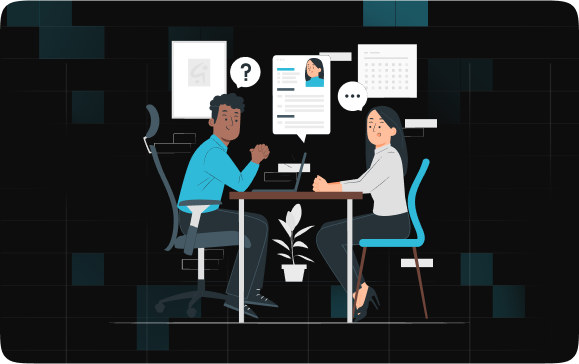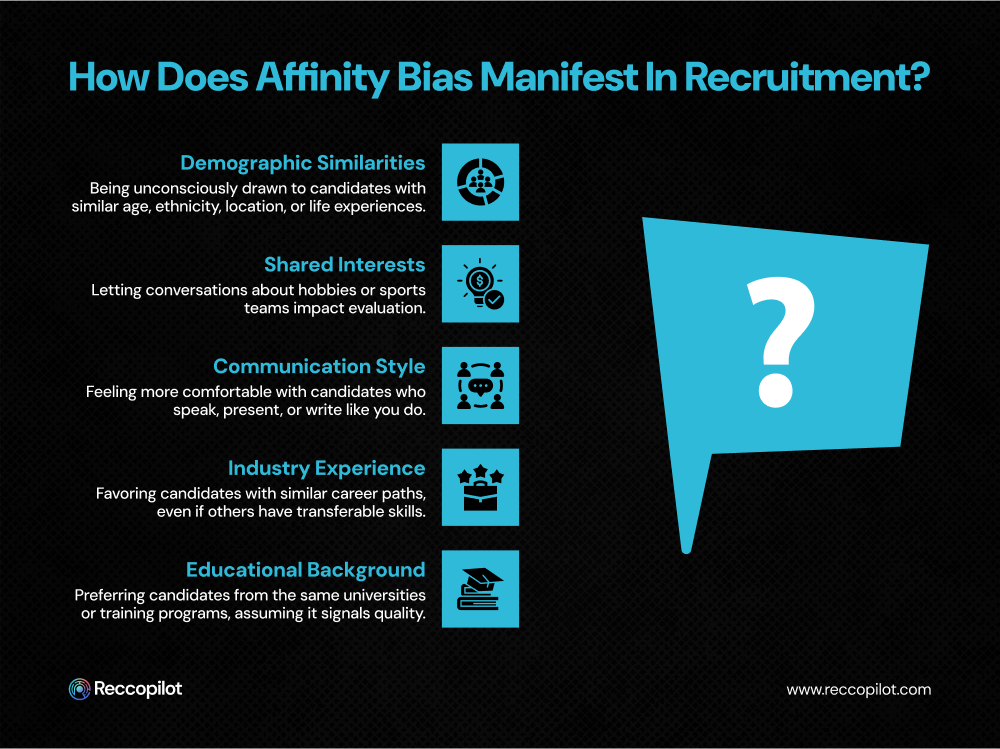What Is Affinity Bias and How to Overcome It in Recruitment
Read Time
10 minutes
Updated On
December 11, 2025
.jpeg)
Ruchi Kumari
Content & Thought Leadership

In 2018, Amazon retired an experimental AI recruiting tool after discovering it reflected historical gender bias from the company’s past hiring data. Far from proving that AI “can’t be trusted,” the incident became a powerful industry wake‑up call: bias can exist not only in human decision‑making but also in the algorithms we create, especially if they are trained on flawed or unbalanced data.
The real takeaway? With the right design, diverse training datasets, and continuous human oversight, AI recruiter agent can transform from a potential amplifier of bias into one of the most effective tools we have for building fairer, more inclusive recruitment systems.
But here’s the twist: when implemented correctly, AI can actually help us identify and eliminate bias, giving recruiters the tools to make genuinely merit-based hiring decisions.
Recent research is sobering:
The reality is clear: affinity bias exists, and the task before us is to combine human awareness with technological solutions to root it out, before it costs us our best talent.

Affinity bias is an unconscious tendency to favor people who share similar backgrounds, experiences, interests, or characteristics as ourselves. In recruitment, this often means feeling a natural connection with candidates who remind us of us, whether through the same education, career path, hobbies, or communication style. While it may seem harmless, this familiarity can subtly influence hiring decisions, pushing us toward “gut feeling” choices rather than purely merit-based evaluations.
The problem is that affinity bias works quietly in the background, often without us realizing it. Over time, affinity bias in the workplace can reduce diversity, limit the range of ideas within teams, and cause organizations to overlook talented candidates who don’t “fit the mold.” Recognizing this bias is the first step toward building fairer and more objective hiring practices, ensuring that recruitment decisions are based on skills, potential, and value to the organization, not just similarity and comfort.
Affinity bias is subtle, which makes it dangerous. It doesn’t announce itself, it hides behind legitimate-sounding reasons for preferring one candidate over another.

Here are common ways it manifests in recruitment:
These tendencies are rarely intentional, but they shape who gets hired, and who doesn’t. Over time, this leads to homogeneous teams, limited diversity, and missed opportunities for innovation.
Affinity bias isn’t just a “diversity problem.” It’s a business problem with measurable costs.

Poor hiring decisions driven by affinity bias and other unconscious biases can lead to increased turnover, higher recruitment and training costs, and lost productivity. Research from McKinsey shows that companies with diverse workforces are 35% more likely to have financial returns above their industry median, underscoring the cost of homogenous hiring practices and missed talent. These financial consequences highlight the importance of minimizing bias to improve hiring quality and business performance.
When everyone on a team thinks and works in similar ways, innovation suffers. Homogeneous groups form echo chambers where ideas are rarely challenged, creating blind spots and slowing adaptation in competitive markets.
Affinity bias silently screens out qualified candidates. For example, studies show male candidates are 1.5 times more likely to advance to screening than equally qualified women.
In an era where Diversity, Equity, and Inclusion (DEI) are highly valued, companies seen as biased risk lawsuits and damage to their employer brand.
Affinity bias also limits promotions internally, creating frustration among diverse employees who don’t “fit the mold,” leading to disengagement and resignations.
Before you can address bias, you have to notice it. Here’s a quick framework to uncover it in your hiring process:
If you answer “yes” to several of these, affinity bias may be influencing your hiring process more than you realize.
Tackling affinity bias requires system-level changes, not just awareness. Here are evidence-based strategies:

With 1.8 million applicants a year, Unilever relied on AI tool’s game-based assessments and video interview analysis. These tools scored candidates based on cognitive and emotional traits, ignoring visual identity cues.
Results:
IBM used AI to analyze hiring patterns, identifying bias trends and screening for retention likelihood.
Results:
These case studies prove that AI + human oversight can deliver measurable bias reduction without sacrificing quality.
This isn’t about removing humanity from recruitment; it’s about balancing human connection with fairness. The organizations that actively recognize and eliminate affinity bias don’t just “look” more diverse, they perform better, attract stronger talent, innovate faster, and retain employees longer.
For HR leaders, recruiters, and talent acquisition specialists, tackling bias is both a responsibility and a competitive advantage. By uniting structured human processes with AI-powered bias detection, you can make hiring decisions based on capability, not comfort.
Your hiring choices today will shape your organization for years. Choose to see beyond similarity.
